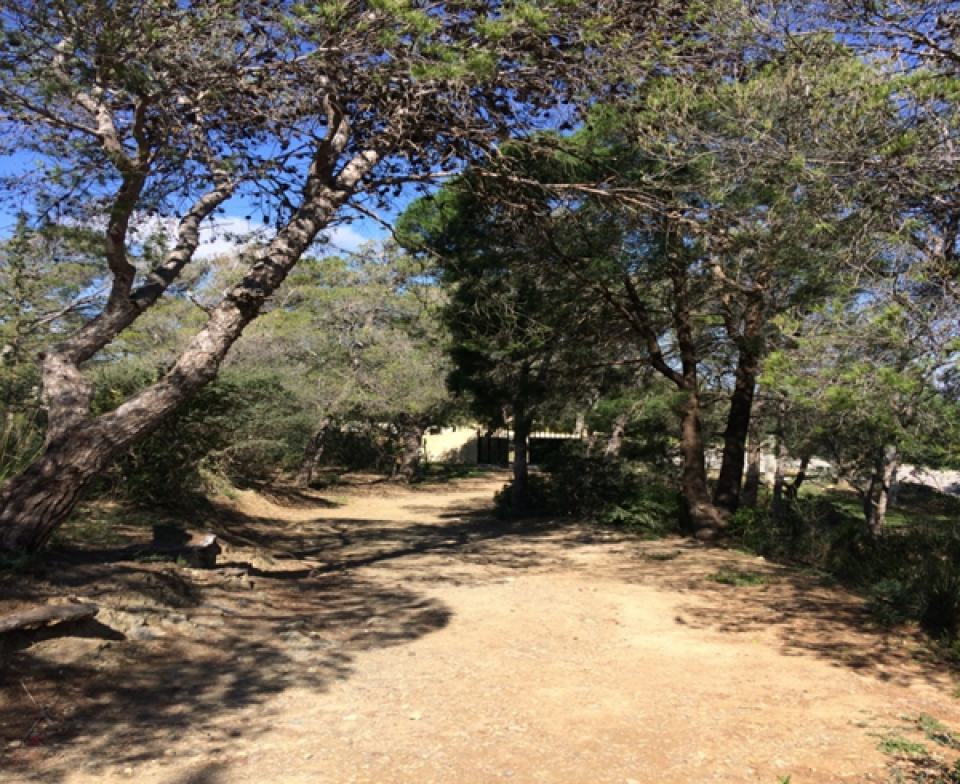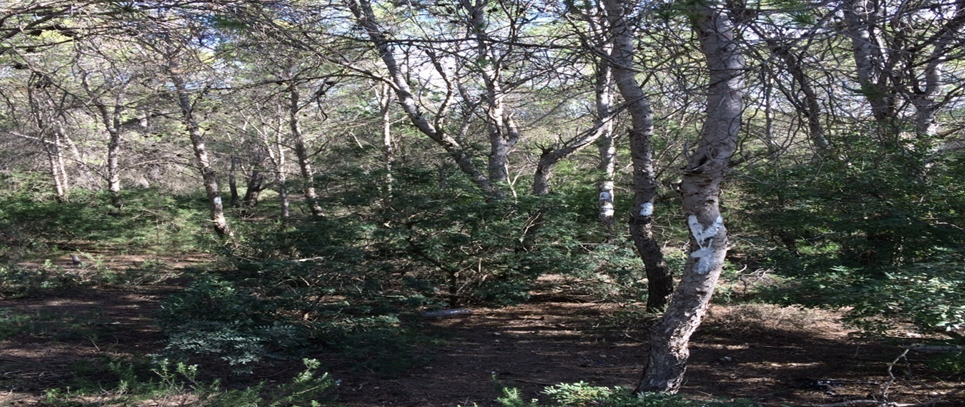
Aleppo pine (Pinus halepensis Mill.) is one of the most drought-tolerant pine species and it is distributed over large drought-prone Mediterranean regions. The determination of the water balance of the soil-crop-climate and its fluctuation is difficult to achieve, due to the spatial variation in site conditions (Schiller and Cohen, 1998). The objectives of this study are to (1) estimate crop water requirements (ETc) and actual evapotranspiration (ETa) of Tunisian Aleppo pine and (2) study the impact of climate change on water balance, using the WEAP-MABIA Module (Yates et al.,2005a; 2005b; Jabloun and Sahli, 2012) based on the FAO Irrigation and Drainage publication 56 (Allen et al., 1998).
The estimation of Crop water requirements (ETc) and actual evapotranspiration (ETa) requires various climate, soil, and crop data (Keenan, 2015). The FAO Penman-Monteith approach is considered as a standard method for ET estimation in agriculture (Allen et al., 1998). In this work, the WEAP- MABIA method based on the dual crop coefficient (Kc) method of the FAO Irrigation and Drainage Paper No. 56 (Allen et al., 1998) is used. It allows modeling of the soil water budget on a daily basis and the calculation of (ETc) and (ETa) under rainfed and irrigated field conditions.
The maximum monthly (ETo) were registered in July: 300 mm at Djebel Sarj (DS), and 289 mm at Djebel Zaghouan (DZ). Annual reference (ET0) was lower at DZ with 1732 mm than DS with 2370 mm, however (ETc) were 714 mm at DS, and 561 mm at DZ. Water balance shows that for the wet period with low evaporative demand, Aleppo pine (ETa) can reach potential (ETc). The model predicts that water uptake can reach zero when the root-soil layers approach desiccation. This extreme forest water stress during the summer and autumn was reported by Schiller and Cohen (1995) and Baraket et al. (2019) . The deeper water depletion in DS compared to DZ is highly dependent upon the type of soil. In fact, DS soil had higher water holding capacity than DZ.
The FAO Penman-Monteith approach can be used to assess the temporal dynamics of soil moisture to better understand the water-growth relationship of Pinus halepensis Mill. forests in arid and semiarid areas. According to GIEC (2013) and Allani et al. (2020), in the future, an increase of ETo is expected to reach 6% on average, where rainfall could be reduced up to 8% under RCP4.5 and RCP 8.5 emission scenarios. These changes could negatively impact the water supply and the water demand of the forest ecosystem. Using WEAP-MABIA model to assess future water situations under different scenarios of climate change and socio-economic development affecting the Tunisian forest ecosystem will be of great interest.
In view of the physical characteristics of the forest ecosystem, continuous estimating of stand ET0 using the water balance model provided information of a forest specie's water uptake which otherwise would have been very difficult or impossible to obtain experimentally. This approach for determination of forest water balance enables one to study the response of different species to water stress and to improve the adaptation of forest species to specific climate conditions, crop, and soil water characteristics, provided that model assumptions are met and adequate input data are available.
Such contrasting ecohydrological model performances could be further investigated through a more thorough assessment of water use strategies complementing the isotopic results (root distribution profiles, soil water content dynamics at different soil depths, net photosynthetic and transpiration rates dynamics at different climate conditions, etc. Also, comparing the performance of the FAO Penman-Monteith model with eddy covariance method under the Tunisian forest ecosystem will be of great interest to analyze the reliability of model results.
Mokhtar Baraket, moktar.baraket@gmail.com, http://www.inrgref.agrinet.tn/
Mohamed Allani, mohamed.allani@gmail.com , http://www.inat.tn/fr
Zouheir Nasr, zouheirnasr84@gmail.com, http://www.inrgref.agrinet.tn/
Ali Sahli, sahli_inat_tn@yahoo.fr, http://www.inat.tn/fr
Further information
Allani, M., Mezzi, R., Zouabi, A., Béji, R., Joumade-Mansouri, F., Hamza, M.E. & Sahli, A. 2020. Impact of future climate change on water supply and irrigation demand in a small Mediterranean catchment. Case study: Nebhana dam system, Tunisia. Journal of Water and Climate Change, 1-24. https://doi.org/10.2166/wcc.2019.131
Allen, R. G., Luis, S. P., Raes, D. & Smith, M. 1998. Crop Evapotranspiration (Guidelines for Computing Crop Water Requirements). FAOIrrigation andDrainage Paper No.56. FAO,Rome,Italy.
Mokhtar BARAKET, Boutheina KRAIMA, Khaoula NEFZI, Sondes FKIRI, Walid JAOUADI, Zouhair NASR (2019): Seasonal variability of gas exchange responses and hydraulic traits of three provenances of pinus halepensis mill. Proceedings of the Biennial International Symposium”Forest and Sustainable Development” 8 th Edition, 25th -27th of October 2018, Brașov, Romania Wood Industry.
https://silvic.unitbv.ro/images/conferinte/fsd/proceedings/15.-Mokhtar-et-al.---ID-179.pdf
GIEC. 2013. Cinquième rapport du Groupe d'Experts Intergouvernemental sur l'Évolution du Climat.
Jabloun, M. & Sahli, A. 2012. WEAP-MABIA Tutorial: A Collection of Stand-Alone Chapters to aid in Learning the WEAP- MABIAModule. Federal Institute for Geosciences andNatural Resources, Hannover, Germany. https://bit.ly/2lXl5Qp.
Schiller, G. & Cohen, Y. 1995. Water regime of a pine forest under a Mediterranean climate. Agricultural and Forest Meteorology 74, 181-193. https://doi.org/10.1016/0168-1923(94)02195-P
Yates, D., Sieber, J., Purkey, D. & Huber-Lee, A. 2005a. International waterresources association WEAP21 – A demand-, priority-,and preference-driven waterplanning modelpart1: modelcharacteristics. WaterInternational 30 (4), 487–500.
Yates,D. ,Purkey, D., Sieber,J., Huber-Lee, A. & Galbraith, H. 2005b. Planning modelpart2: aidingfreshwater ecosystem service evaluation. WaterInternational 30 (4), 501–512.
Mokhtar Baraket

Mokhtar Baraket
